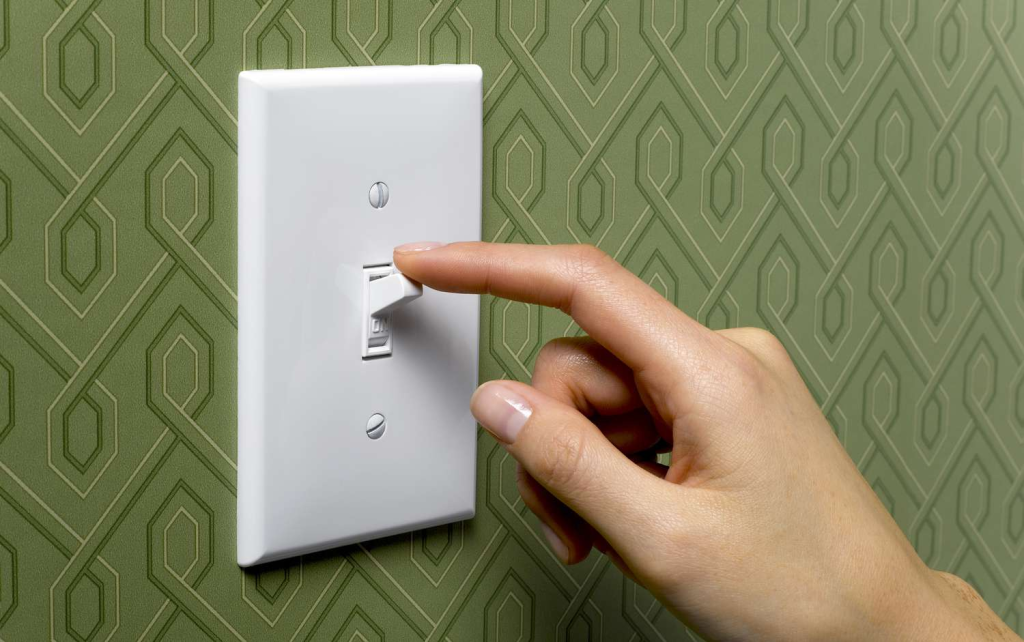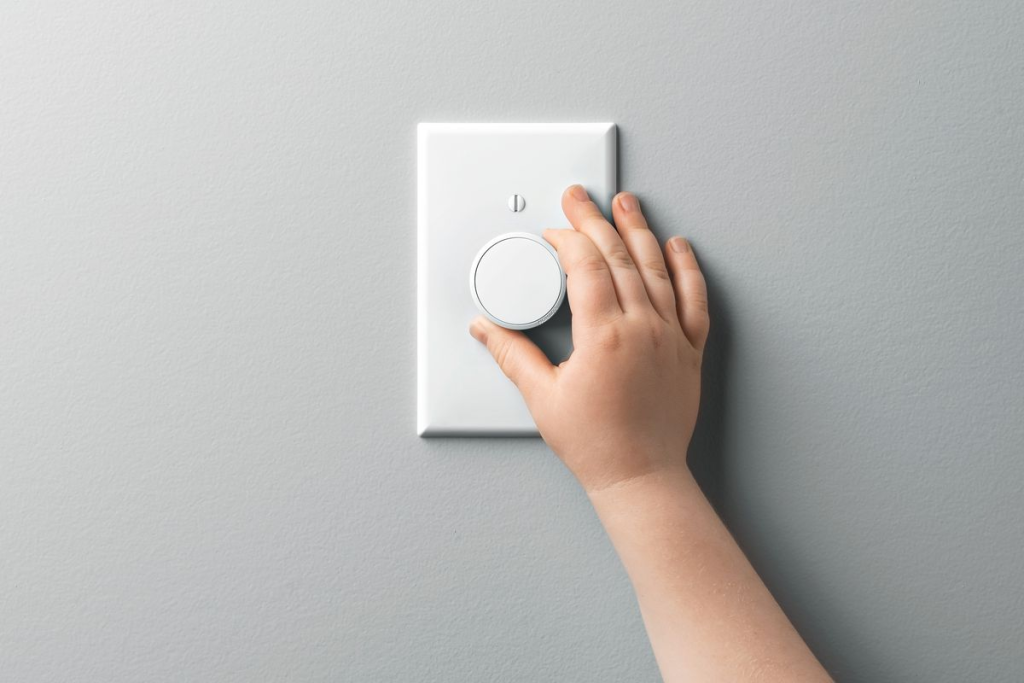Introduction to LED dimmers
LED dimmers are devices that are used to adjust the brightness of LED (light-emitting diode) lights. They work by controlling the amount of power that is supplied to the LED lights, which in turn affects the intensity of the light that is emitted. LED dimmers are an important tool for homeowners, business owners, and event planners because they allow for greater control over the lighting in a space. With LED dimmers, you can create the perfect ambiance for any occasion, whether it be a romantic dinner, a lively party, or a relaxing evening at home.
But how do LED dimmers actually work? In this comprehensive guide, we will explore the inner workings of LED dimmers and how they are able to control the brightness of LED lights. We will also discuss the different types of LED dimmers and the pros and cons of using them. Finally, we will provide some tips for selecting the right LED dimmer for your needs.
Before we dive into the specifics of LED dimmers, it is helpful to have a basic understanding of how LED lights work. LED lights are semiconductor devices that produce light when an electric current passes through them. They are made up of two layers of semiconductor material, with a layer of electrons (negative charge) sandwiched between two layers of holes (positive charge). When an electric current is applied to the LED, the electrons and holes are attracted to each other and combine to produce light.
Now that we have a basic understanding of LED lights, let’s take a closer look at how LED dimmers work.
Types of LED Dimmers
There are three main types of LED dimmers: leading-edge dimmers, trailing-edge dimmers, and hybrid dimmers. It is important to choose the right type of LED dimmer for your specific lighting setup, as using the wrong type of dimmer can result in poor performance or even damage to the LED lights.
Leading-edge dimmers
Also known as phase-cut dimmers, are the most common type of LED dimmer. They work by cutting off the leading edge of the AC waveform that is supplied to the LED lights. This causes a reduction in the average voltage that is applied to the LED lights, which in turn reduces the intensity of the light that is emitted. Leading-edge dimmers are compatible with most types of LED lights and are easy to install. However, they are not as energy efficient as trailing-edge dimmers and can produce a flickering effect when used with some types of LED lights.
Trailing-edge dimmers
Also known as reverse-phase dimmers, work by cutting off the trailing edge of the AC waveform that is supplied to the LED lights. This causes a reduction in the average current that is applied to the LED lights, which in turn reduces the intensity of the light that is emitted. Trailing-edge dimmers are more energy efficient than leading-edge dimmers and do not produce a flickering effect when used with most types of LED lights. However, they are not as widely available and may be more expensive than leading-edge dimmers.
Hybrid dimmers
Combination of leading-edge and trailing-edge dimmers. They are designed to be compatible with a wide range of LED lights and offer the benefits of both types of dimmers. Hybrid dimmers are relatively new on the market and may not be available for all types of LED lights.
It is important to note that not all LED dimmers are compatible with all types of LED lights. It is essential to check the manufacturer’s recommendations for the specific LED lights you are using to ensure that you choose the right type of LED dimmer. Using the wrong type of LED dimmer can result in poor performance or even damage to the LED lights.
How LED Dimmers Work
Now that we have discussed the different types of LED dimmers, let’s delve into the specifics of how they work.
Leading-edge dimmers
Leading-edge dimmers work by cutting off the leading edge of the AC waveform that is supplied to the LED lights. When the dimmer switch is turned on, it allows the full AC waveform to pass through to the LED lights, resulting in maximum brightness. As the dimmer switch is turned down, the leading edge of the AC waveform is gradually cut off, reducing the average voltage that is applied to the LED lights. This causes the intensity of the light to decrease and the LED lights to appear dimmer.
Trailing-edge dimmers
Trailing-edge dimmers work in a similar way, but they cut off the trailing edge of the AC waveform instead of the leading edge. When the dimmer switch is turned on, it allows the full AC waveform to pass through to the LED lights, resulting in maximum brightness. As the dimmer switch is turned down, the trailing edge of the AC waveform is gradually cut off, reducing the average current that is applied to the LED lights. This causes the intensity of the light to decrease and the LED lights to appear dimmer.
Hybrid dimmers
Hybrid dimmers work by combining the principles of both leading-edge and trailing-edge dimmers. They are designed to be compatible with a wide range of LED lights and offer the benefits of both types of dimmers. Hybrid dimmers may use a combination of leading-edge and trailing-edge dimming techniques, or they may use a different method altogether.
It is worth noting that some LED dimmers may not work with certain types of LED lights, especially those with non-standard dimming protocols or those that use specialized driver circuitry. In these cases, it is important to choose a LED dimmer that is specifically designed to work with your LED lights to ensure optimal performance.
Pros and Cons of LED Dimmers
There are several pros and cons to consider when it comes to using LED dimmers.
Pros
One of the main advantages of LED dimmers is their energy efficiency. LED lights are already known for their energy efficiency, but using LED dimmers allows you to further conserve energy by adjusting the brightness of the lights as needed. This can result in significant energy savings, especially if you frequently use your LED lights at lower brightness levels.
LED dimmers are also convenient because they allow you to easily adjust the brightness of the LED lights to suit your needs. Whether you want a bright, well-lit space for working or a cozy, dimly-lit atmosphere for relaxing, LED dimmers make it easy to achieve the perfect ambiance.
In addition, LED dimmers can extend the lifespan of your LED lights by reducing the amount of stress on the LED bulbs. When LED bulbs are operated at lower power levels, they are less likely to overheat and experience premature failure.
Cons
However, there are also some potential downsides to using LED dimmers. One potential issue is compatibility. As mentioned earlier, not all LED dimmers are compatible with all types of LED lights, and using the wrong type of LED dimmer can result in poor performance or even damage to the LED lights. It is important to carefully read the manufacturer’s recommendations and choose the right LED dimmer for your specific LED lights.
Another potential issue is flickering. Some types of LED dimmers, particularly leading-edge dimmers, can cause flickering when used with certain types of LED lights. This can be annoying and may even cause headaches in some people. Trailing-edge dimmers are less likely to cause flickering, but they may not be as widely available or as energy efficient as leading-edge dimmers.
In summary, LED dimmers offer energy efficiency, convenience, and the ability to extend the lifespan of LED lights. However, it is important to carefully consider the compatibility and flickering issues when deciding whether to use LED dimmers.
Choosing the Right LED Dimmer

When choosing an LED dimmer, there are several factors to consider to ensure that you select the right one for your needs.
The first factor to consider is compatibility with your LED lights. As mentioned earlier, not all LED dimmers are compatible with all types of LED lights. It is essential to check the manufacturer’s recommendations for the specific LED lights you are using to ensure that you choose the right type of LED dimmer. Using the wrong type of LED dimmer can result in poor performance or even damage to the LED lights.
Another factor to consider is the type of dimmer switch you prefer. LED dimmers are available with a variety of control options, including physical knobs or sliders, remote control, and smart home integration. Choose the control option that best suits your personal preference and the specific needs of your lighting setup.
It is also important to consider the load rating of the LED dimmer. The load rating refers to the maximum wattage that the LED dimmer is designed to handle. It is important to choose an LED dimmer with a load rating that is equal to or greater than the total wattage of the LED lights you are using. Using an LED dimmer with a load rating that is too low can result in poor performance or even damage to the LED lights.
In summary, when choosing an LED dimmer, it is important to consider compatibility with your LED lights, the type of dimmer switch you prefer, and the load rating of the LED dimmer. Careful consideration of these factors will help ensure that you select the right LED dimmer for your specific needs.
Conclusion: The Importance of Proper LED Dimmer Selection
In conclusion, LED dimmers are an important tool for anyone looking to have greater control over the lighting in their home or business. By controlling the amount of power that is supplied to LED lights, LED dimmers allow you to adjust the intensity of the light and create the perfect ambiance for any occasion. There are three main types of LED dimmers: leading-edge dimmers, trailing-edge dimmers, and hybrid dimmers, each of which works slightly differently and is compatible with different types of LED lights. There are also several different ways that LED dimmers can be controlled, including manual adjustment, remote control, and smart home integration.
However, it is important to carefully consider the pros and cons of using LED dimmers and to choose the right LED dimmer for your specific needs. Compatibility with your LED lights, the type of dimmer switch you prefer, and the load rating of the LED dimmer are all important factors to consider when selecting an LED dimmer. By taking the time to carefully choose the right LED dimmer, you can ensure that you get the most out of your LED lighting setup and enjoy optimal performance.
Frequently Asked Questions about LED dimmers
Yes, LED dimmers can be energy efficient because they allow you to adjust the brightness of the LED lights as needed, which can result in significant energy savings. However, it is worth noting that some types of LED dimmers, such as leading-edge dimmers, may be less energy efficient than others.
No, it is important to choose the right type of LED dimmer for your specific LED lights. Some LED dimmers are not compatible with certain types of LED lights, and using the wrong type of LED dimmer can result in poor performance or even damage to the LED lights. It is essential to check the manufacturer’s recommendations for the specific LED lights you are using to ensure that you choose the right type of LED dimmer.
Some types of LED dimmers, particularly leading-edge dimmers, can cause flickering when used with certain types of LED lights. This can be annoying and may even cause headaches in some people. Trailing-edge dimmers are less likely to cause flickering, but they may not be as widely available or as energy efficient as leading-edge dimmers.
Yes, there are LED dimmers that can be controlled using a smartphone or voice commands through a smart home assistant such as Amazon Echo or Google Home. These are known as smart LED dimmers and can be programmed to turn












